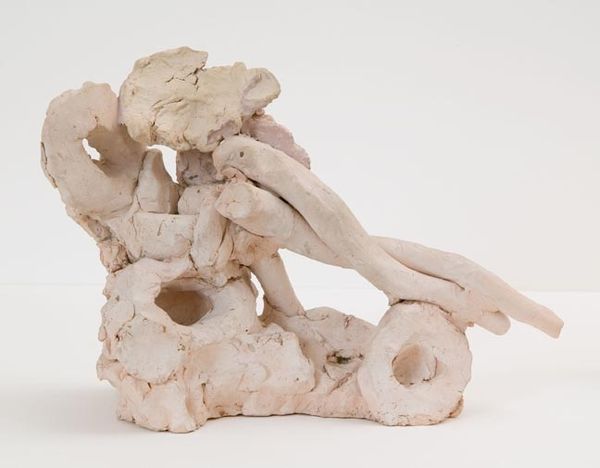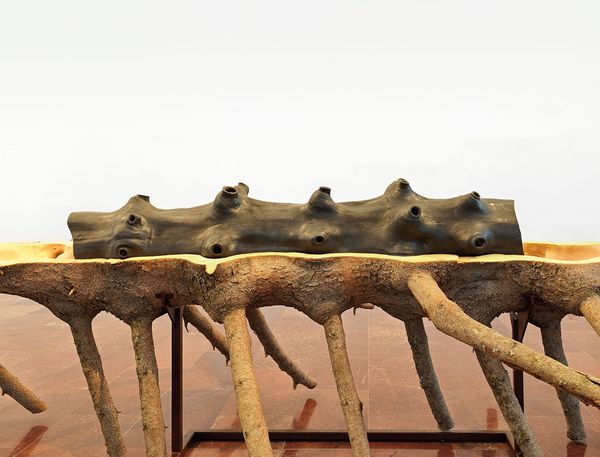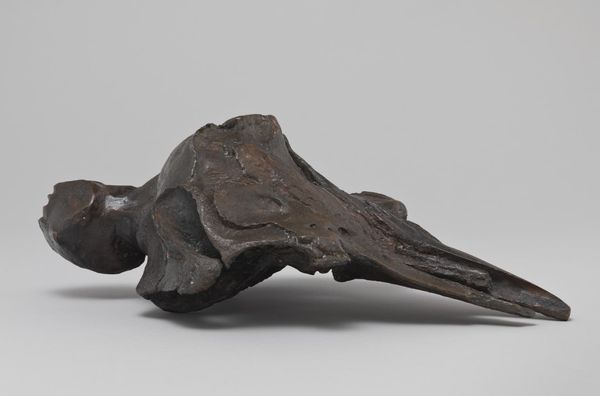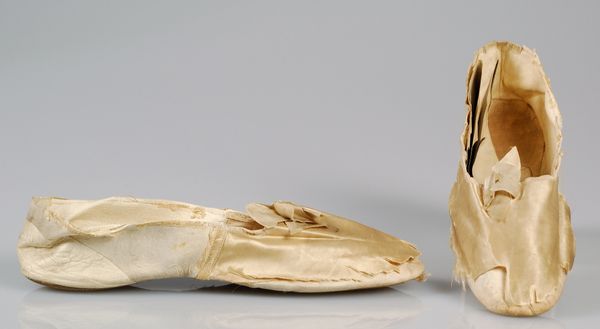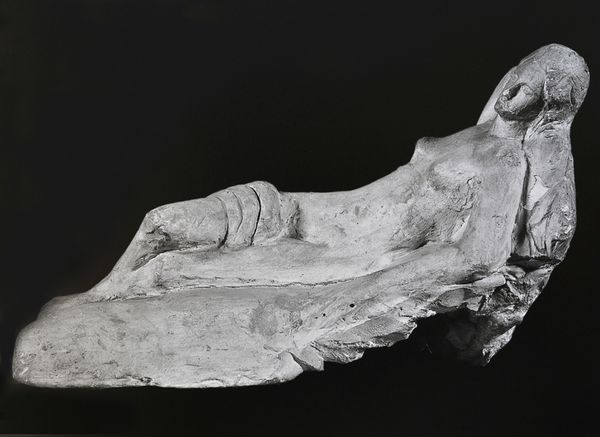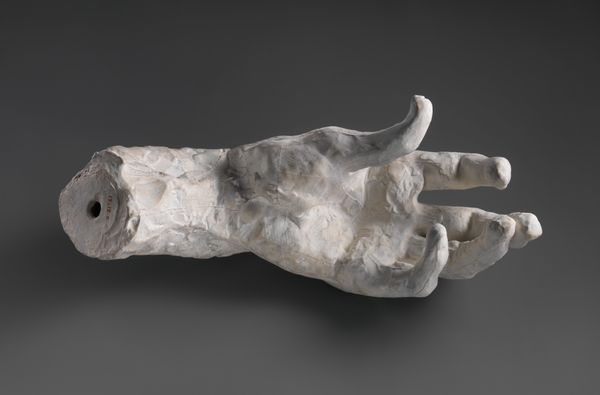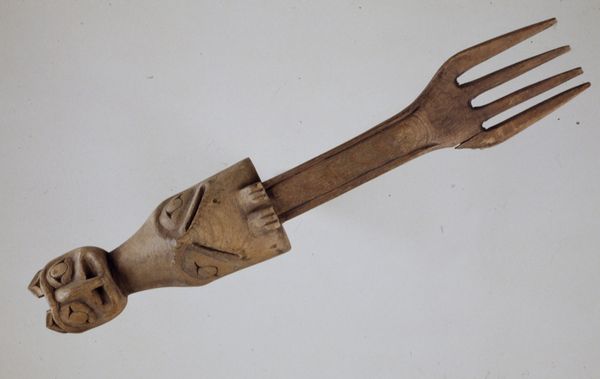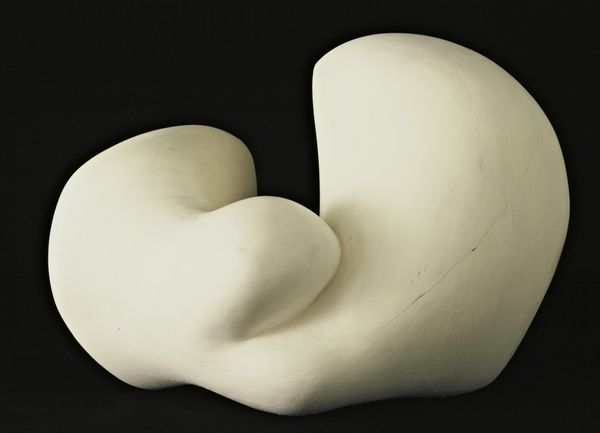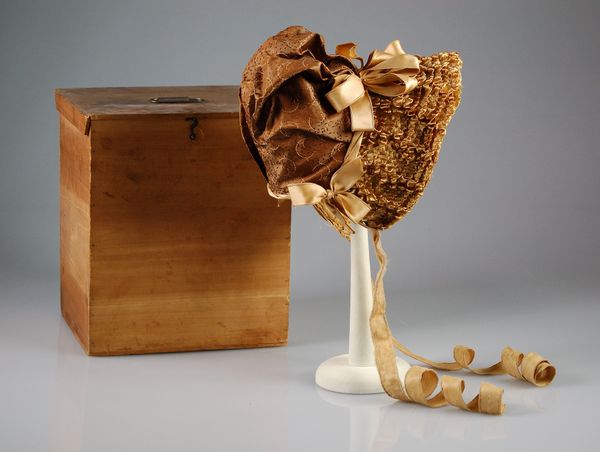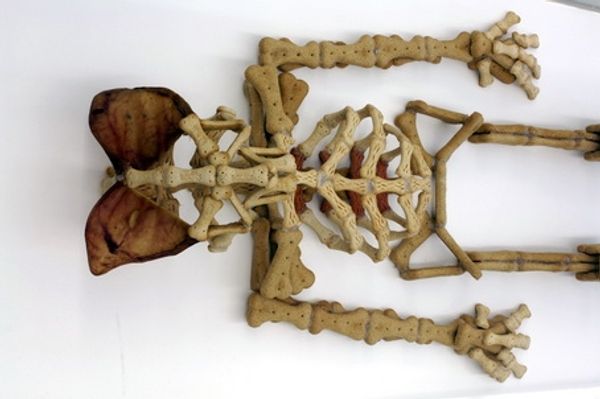
Tug-of-war between monkeys and farmer with his son c. late 19th century
0:00
0:00
carving, sculpture, ivory
#
carving
#
narrative-art
#
asian-art
#
japan
#
figuration
#
sculpture
#
genre-painting
#
ivory
#
miniature
Dimensions: 3 1/4 x 18 x 1 5/8in. (8.3 x 45.7 x 4.1cm)
Copyright: Public Domain
Editor: So, this striking miniature is titled "Tug-of-war between monkeys and farmer with his son," dating from the late 19th century. It's an ivory carving by Tsugitoshi. It immediately strikes me as whimsical and humorous, the juxtaposition of human and animal in this exaggerated struggle is quite charming. What are your initial thoughts on it? Curator: Well, as a historian, what stands out is the context of ivory carving in late 19th-century Japan. These miniature carvings, often netsuke or okimono, weren’t just whimsical objects. They served a vital purpose in society and reflected changing cultural dynamics as Japan opened to the West. Editor: Oh, I see! How were these carvings displayed and received in the West versus Japan at the time? Curator: That’s a critical distinction. In Japan, they were functional accessories, toggles for suspending pouches or purely decorative items in the home, appreciated for their detailed craftsmanship and narrative quality. As Japan opened to trade with the West during the Meiji era, objects like these were marketed as exotic souvenirs. The West had a fascination with what they saw as Japanese otherness and fine craftsmanship, creating a lucrative market. Do you think the theme—a tug-of-war—suggests anything about those cross-cultural exchanges? Editor: Hmm, perhaps! It could be a subtle commentary on the struggle between tradition and modernity, with the monkeys, symbolizing the old ways, literally pulling against the farmer, representing agricultural life, that, itself, could represent newer influences... Curator: Interesting interpretation! Or even the relationship between the colonizer and the colonized. These images carry coded meaning to specific populations. This helps us understand power relationships during that period. So much is conveyed in something so small. Editor: It's amazing how an object like this captures so much complexity. I didn't realize how the international market would influence art forms like this. Curator: Exactly! That’s what I love about art history: it’s not just about the object, it’s about the world around it.
Comments
No comments
Be the first to comment and join the conversation on the ultimate creative platform.
